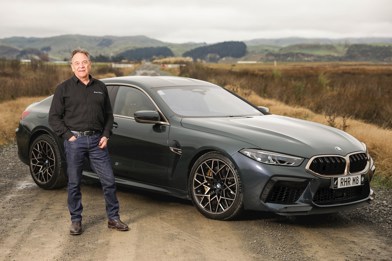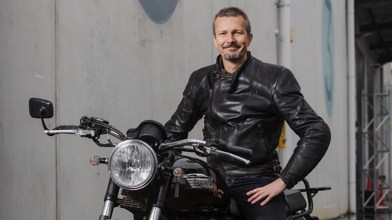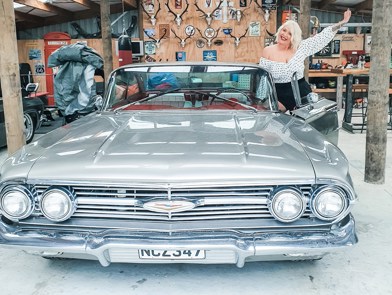We’re all just quietly waiting for McLaren to drop the ball.
This is a marque that just seven years ago burst forth from the ashes to get back into producing road cars. With a dogged determination they hit the ground running with the tight and technical MP4-12C, and since then they’ve been more or less unstoppable.
The 12C’s Super Series replacements are modern motoring machetes, then there’s the international sensation known as the P1 — a hypercar so pumped full with technology it helped create a whole new hierarchy at the very top of the performance tree.
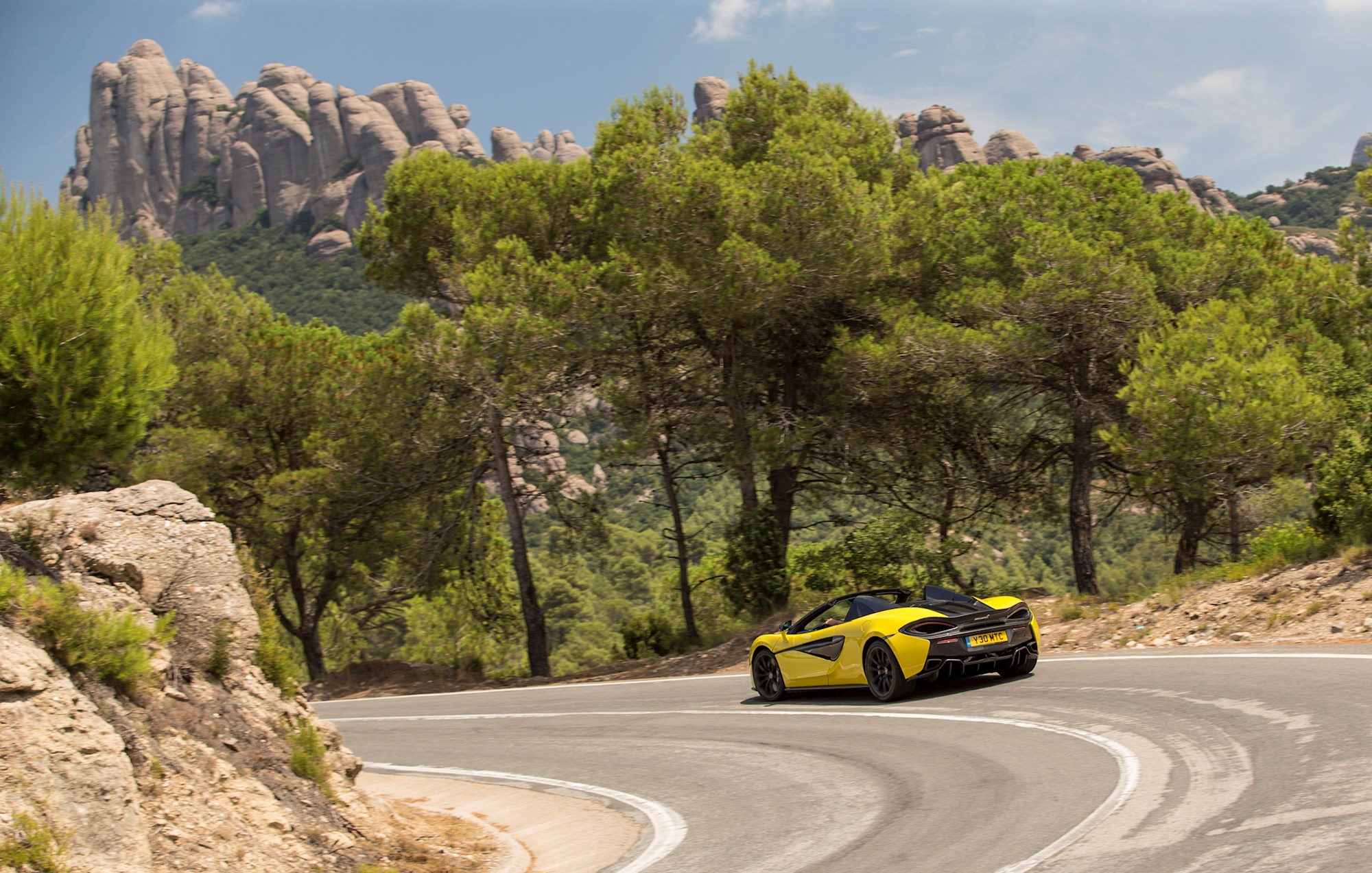
McLaren have only been with us a few years, but the amount of swagger and confidence in the way they have simply inserted themselves straight into battle is beyond simply being admirable — it’s breath taking.
The likes of Ferrari and Lamborghini attack the task of speed with decades and decades of history and learning bolstering their artillery. How annoying it must feel for them ... to be humbled by a seven-year-old.
If there’s a complaint that’s been made across McLaren’s comeback range, it’s a perceived lack of personality. It sounds like the sort of stock complaint people with little imagination throw around with gay abandon, but it’s hard to deny.
So, what better way to defy that kind of ‘reputation’ than to launch a convertible supercar? And, to do it in one of the world’s most fun-loving locations; Barcelona, Spain.
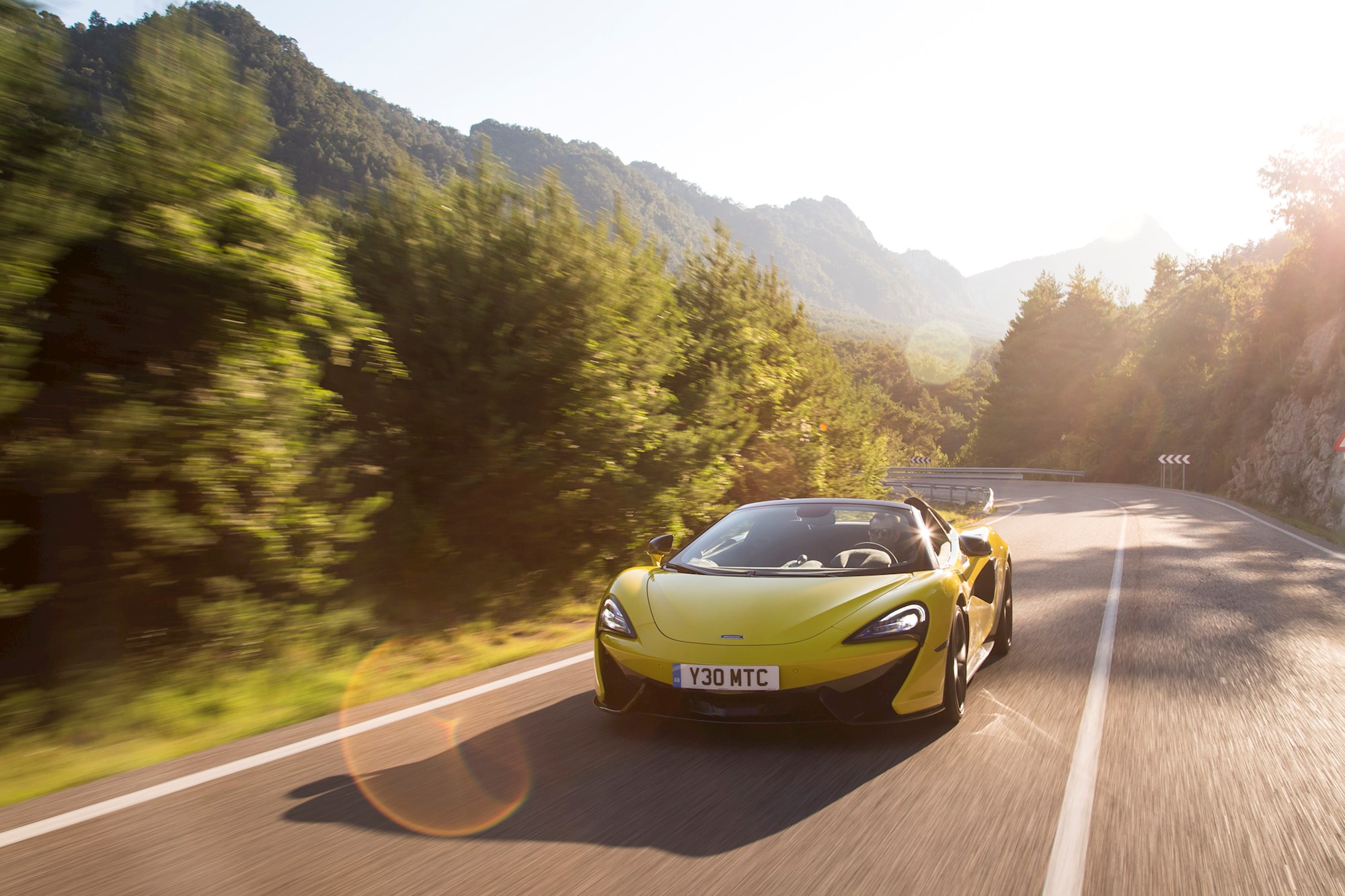
The McLaren 570S Spider is the latest installment in the Sports Series alongside the 540C, 570S, and 570GT. Priced at $369,000, it sits atop the totem pole; $10,000 more than the GT, and $30,000 more than the standard S. The Spider utilizes a lot of the same elements as its counterparts, including the same smart, Alcantara-loaded interior, and the same 419kW 3.8-litre flat-plane twin-turbo V8 engine.
To say it 'lacks personality' would be to deny the presence of hundreds of people clamouring for a photo of the fleet of press cars, as we rolled out of inner city Barcelona for our crucial drive. People on the street, people lined up next to us in traffic; you can see them all fiddling in their purses and pockets to try and wrench out their phones for a digital memento.
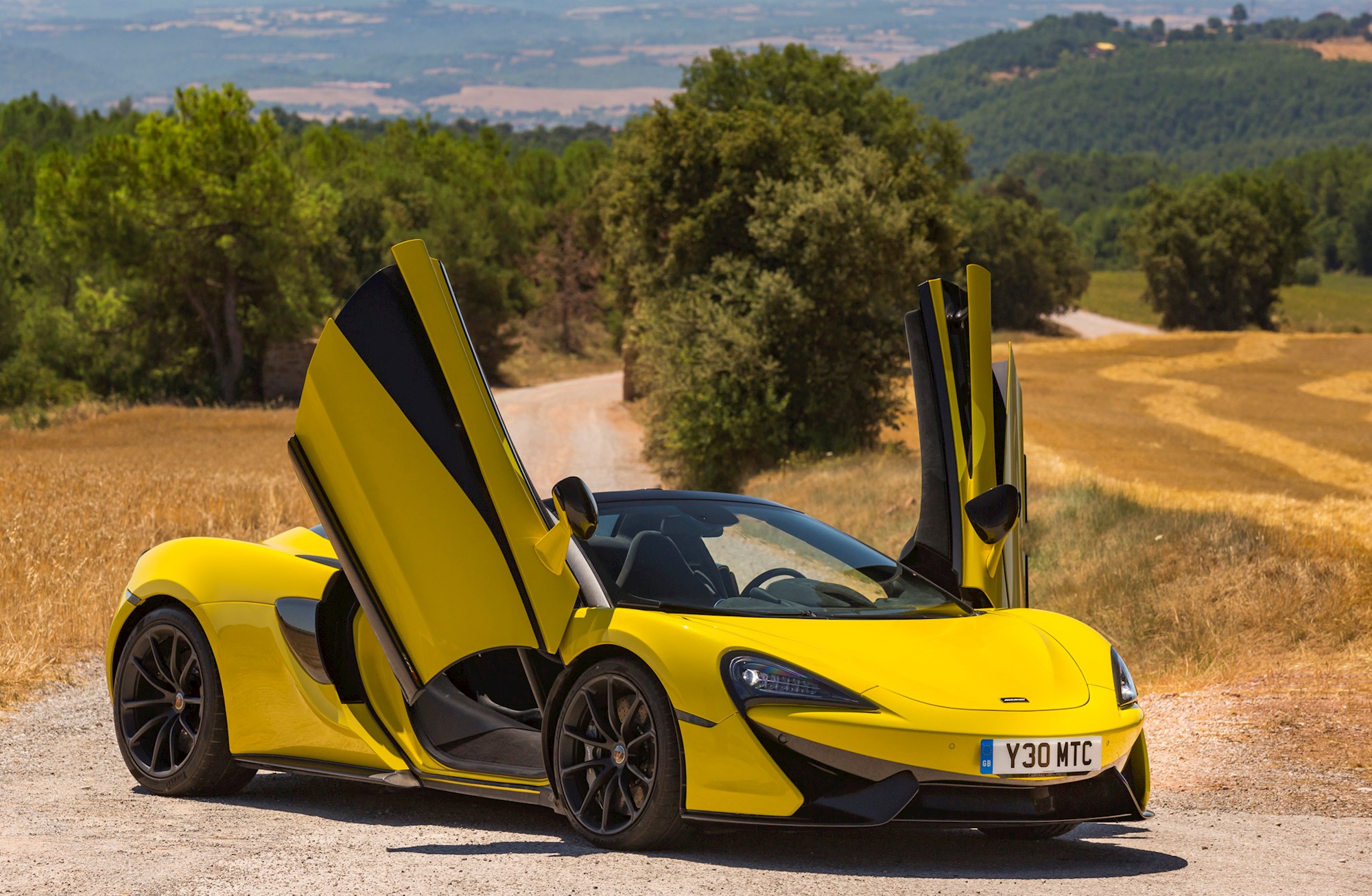
The Spider is no doubt a stunning car; the prettiest of the Sports Series range. With the roof up it looks almost just like a 570S, save for some minor differences behind the cockpit. But, roof down (a 15-second process), it looks gorgeous — looking borderline ‘boulevard cruiser’ in this beautiful setting. At normal speeds the cockpit is a nice place to sit, though when those speeds exceed 120km/h turbulence tends to dominate conversation. And don’t expect the electric wind deflector to cure matters, because it is largely ineffectual.
The thing though is, it’s not meant to be a cruiser. McLaren’s goal from the outset was for the Spider to be as much of a weapon as its coupe cousin; honing McLaren’s knack for mixing race track thrills with exemplary road manners.
And yet, during the early phase of the drive — one where our biggest challenges were stop signs, pedestrians, and legions of impatient taxis — the McLaren felt like it was right at home. Steering was light, the suspension soaked up most bumps, and visibility (just like with the coupe) is surprisingly plentiful. Even with our car’s optional take-no-prisoners stiff bucket seats, comfort wasn’t an issue.
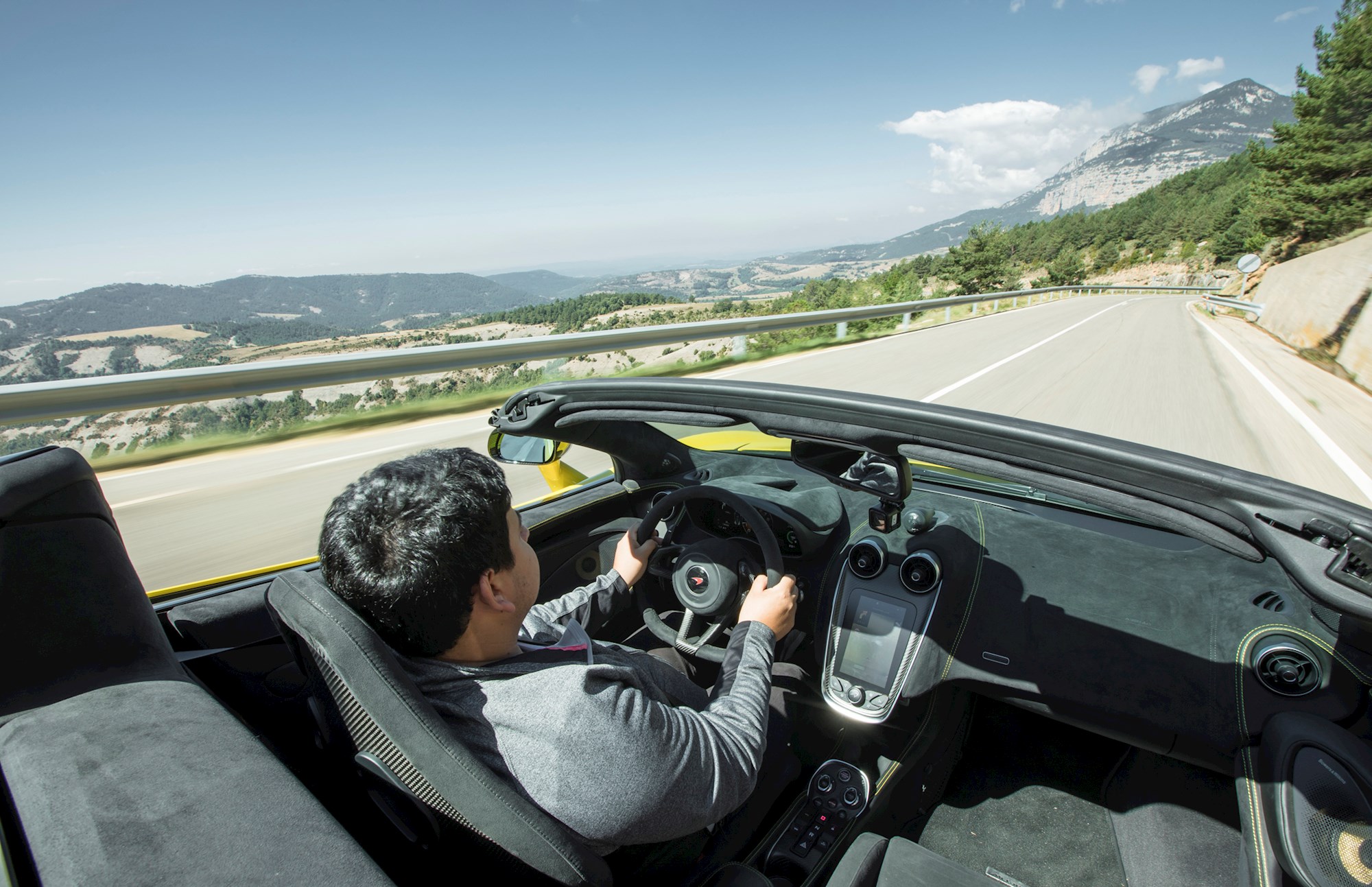
It’s enough of a blindside to force one to wonder whether the 570’s gone a little soft with this new change. Historically of course, roofless examples of sports cars are always a bit more mellow, more wobbly, than their coupe counterparts due to additional weight under the skin. It’s simply a fact of life.
Our speeds creep up as we leave the centre of Barcelona. Soon the glassy sky scrapers and gothic architecture are replaced with mountainous backroads. Some are sweeping and commodious, coated with freshly painted markings. Others are treacherous and narrow. Arriving over crests without warning, they’re lined with trees and Armco that fades downwards into the earth. Some of the most dangerous, most brilliant roads I’ve ever seen.
And on these roads, the McLaren delivers little compromise.
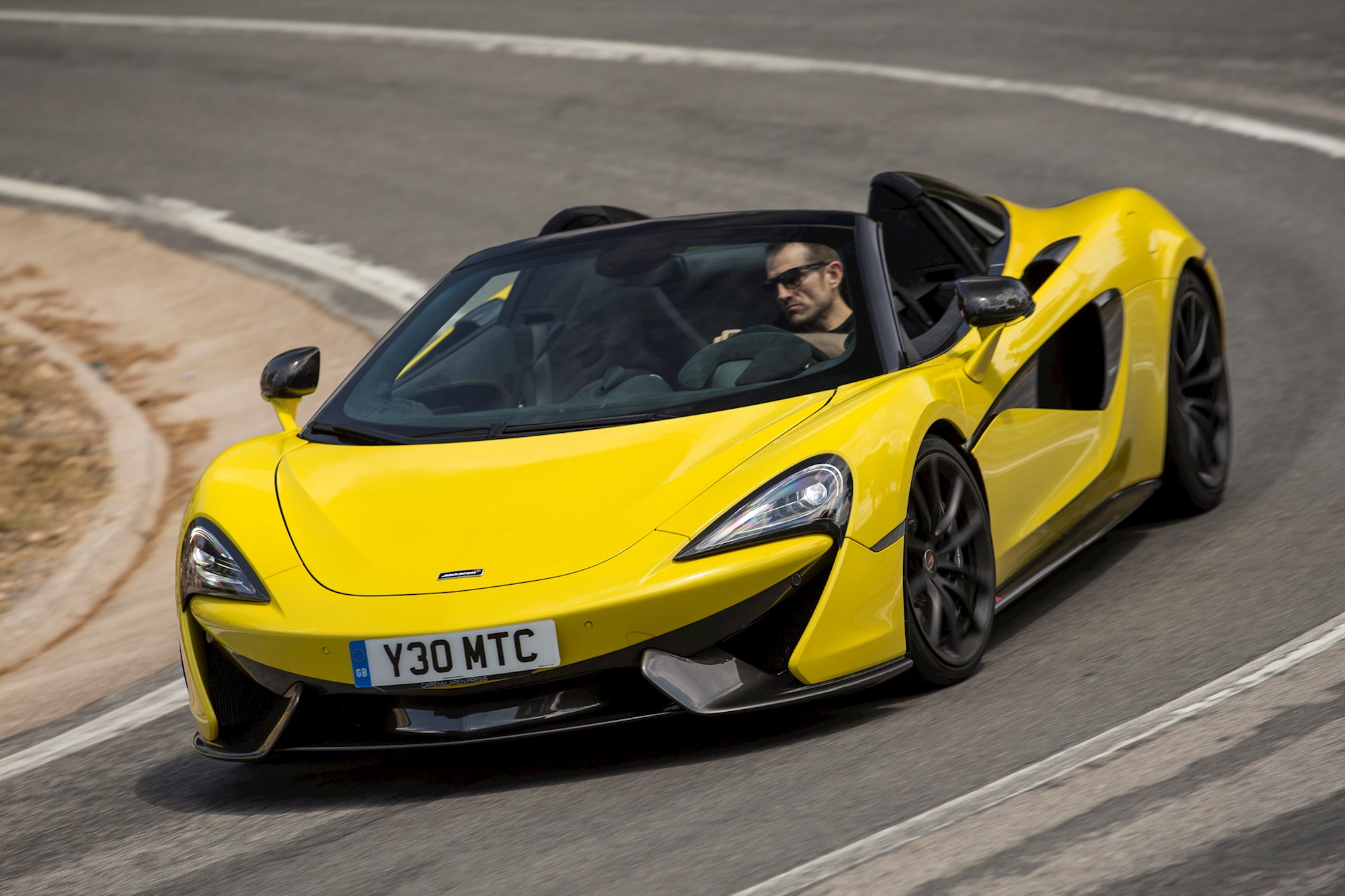
Yes, the 570S Spider weighs more than the coupe. But it’s just 46kg — less than a passenger. The truth of the Spider is that it was designed alongside the coupe; McLaren’s engineers building both cars to such a stiff standard on their stellar carbon-fibre MonoCell II platform that the convertible simply doesn’t need any additional bracing (or weight) built in. That 46kg of surplus flab? That’s just the roof mechanism and its storage space.
Acceleration isn’t harmed, with the only loss in pace coming in the 0–200km/h sprint, where the Spider is a tenth slower than the coupe. Top speed is the same with the roof up (328km/h), and just over 12km/h slower with it down.
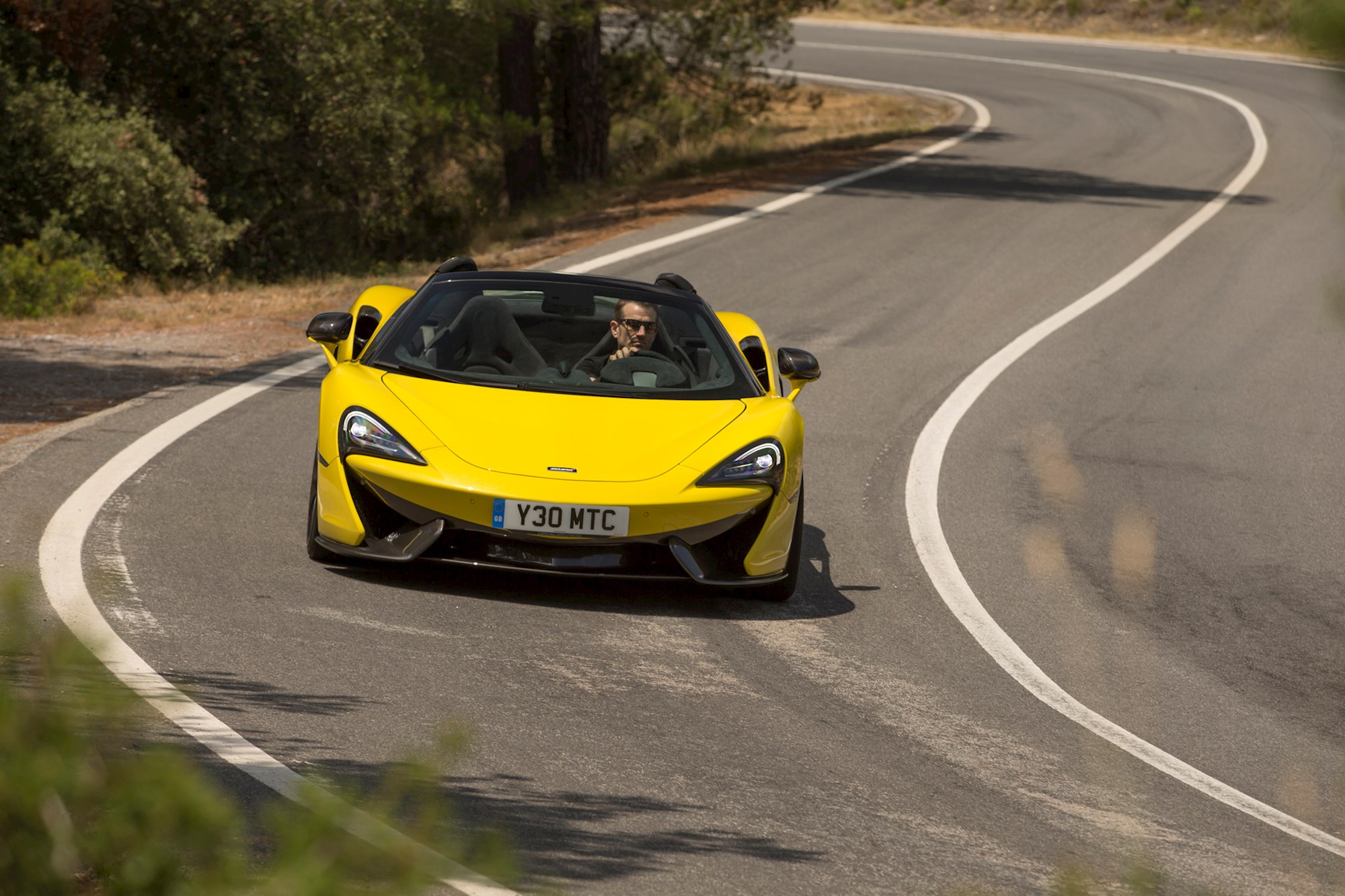
This all translates to a car that, in a manner exactly like that of the 570S coupe, bursts out of corners with enthusiasm. Redline comes at 7,500rpm, but is rarely necessary thanks to the big lump of torque McLaren’s twin-turbo V8 delivers low in the rev range. For our drive through Barcelona’s hilly and scenic B roads, leaving the car in third gear was optimal.
Though, the temptation to rattle through gears is always going to be strong when the box is as enjoyable as McLaren’s dual-clutch seven-speed ‘seamless shift’ gearbox. No, it’s not as intimate as a classic manual, but it’s infinitely quicker. And, unlike a lot of other flappy-paddle boxes, it’s actively fun to use.
The carbon-fibre paddles behind the steering wheel are among the most tactile I’ve ever felt — each gear passing with a satisfyingly crisp ‘click’. The shifts themselves are instant; upshifts give the driver a little kick in the small of the back, while downshifts feel snappier than they do in some bona fied race cars.
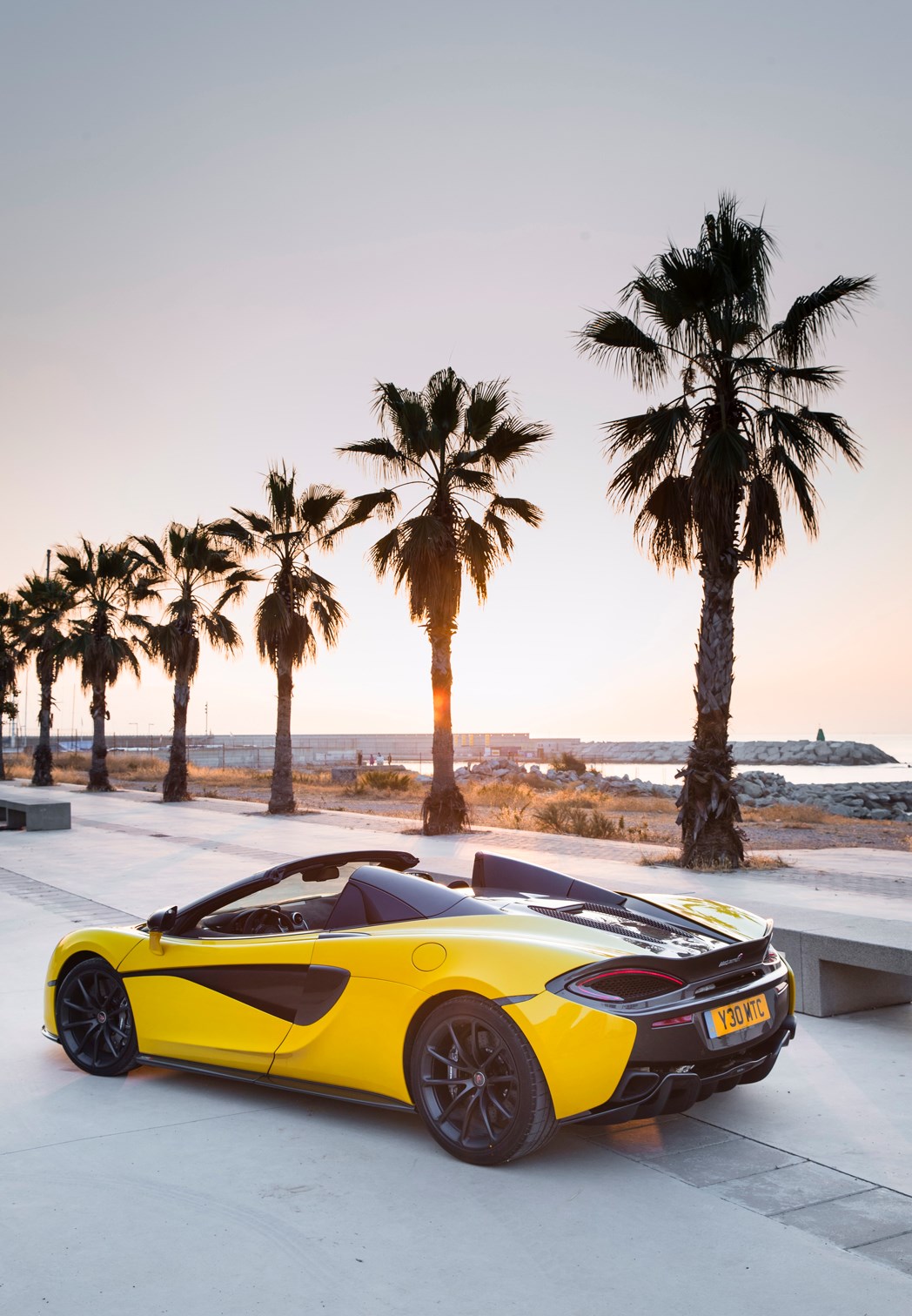
And naturally, the winding bits in between each big application of right-foot immaturity are dealt with without breaking a sweat. Here, the steering is still the hero. Like the car upon which it’s based, the Spider comes with old-school hydraulic steering — as opposed to the electric systems used by nearly everyone else in the business. It’s light and usable like those electric alternatives, but at speed it comes alive — shifting underneath the driver’s fingertips to the groove of the road surface underneath.
While the suspension, engine, and transmission make the 570S incredibly capable, it’s the steering and how it navigates corners that give it a real identity.
One of the few weaknesses are the carbon-ceramic brakes. On a track or a thrashable back road they’re an exceptional sidekick. But in the real world, they feel wooden until you really stomp the pedal through the firewall.
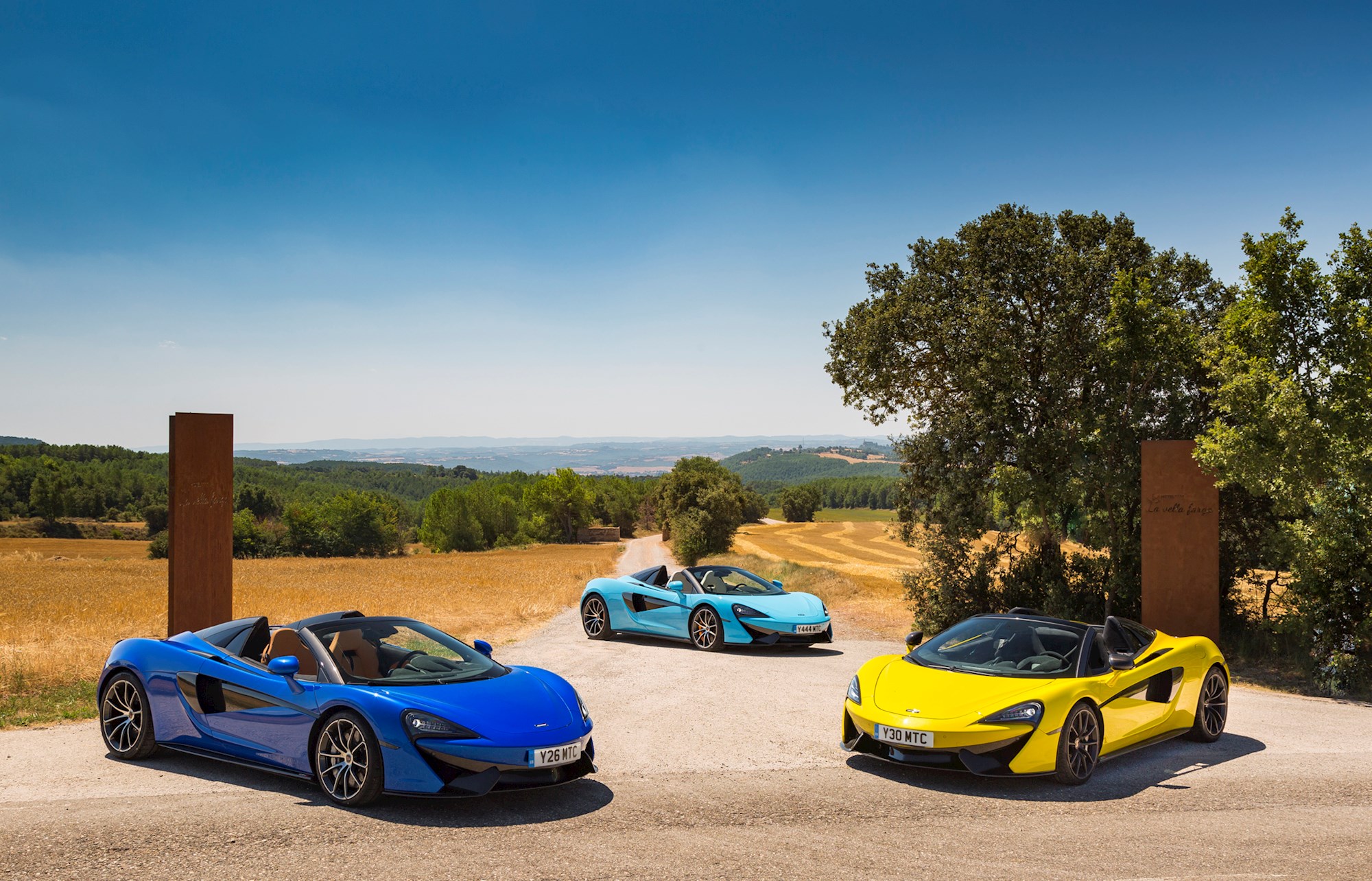
Over the next five years, McLaren plan to introduce another 13 new models, by which point at least half of the range will be hybrids. In their first seven years they’ve yet to drop the ball, and judging by the execution of the 570S Spider, the next seven are likely to be even better.
Wouldn’t Bruce be proud.
McLaren 570S Spider
Price: $369,000
Pros: A true everyday supercar, very capable, looks better than ever
Cons: Brakes lacking at road speeds, buffeting and wind noise, infotainment screen glare

















